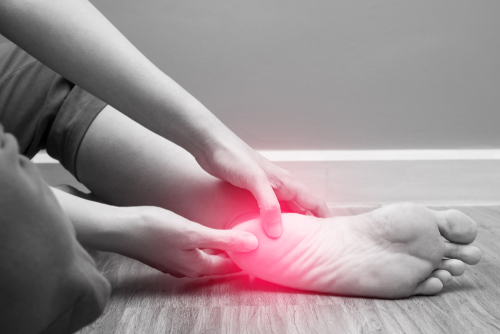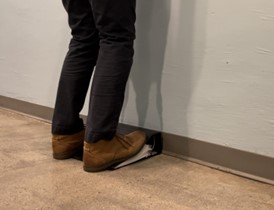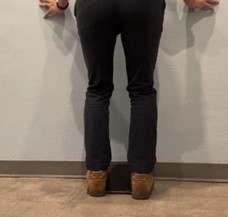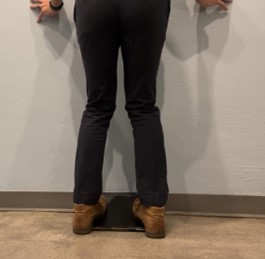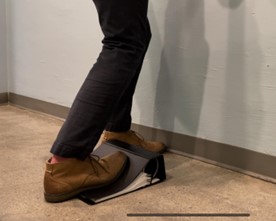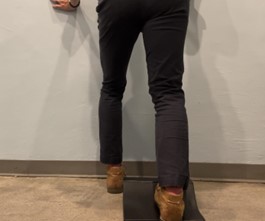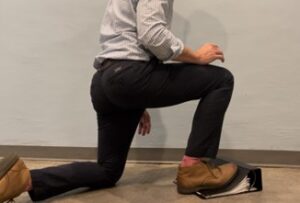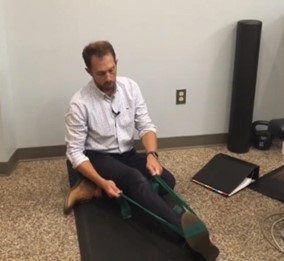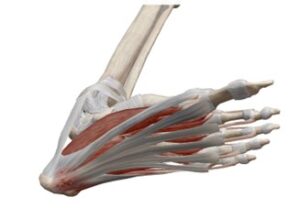 Plantar fasciitis is a debilitating repetitive microtrauma injury involving the plantar fascia and neighboring muscles of the foot. The name of this condition may be unfamiliar to some, but the pain in the heel of the foot certainly is not. This condition causes over 1 million people in the United States to hobble out of the bed in the morning and seek care from physical medicine providers.
Plantar fasciitis is a debilitating repetitive microtrauma injury involving the plantar fascia and neighboring muscles of the foot. The name of this condition may be unfamiliar to some, but the pain in the heel of the foot certainly is not. This condition causes over 1 million people in the United States to hobble out of the bed in the morning and seek care from physical medicine providers.
Plantar fasciitis is typically diagnosed based upon symptom presentation. The sharp, achy, and frequently burning pain occurs in the bottom of the foot near the origin of the plantar fascia on the calcaneus. This pain most often occurs after standing from a sitting position, getting out of the bed in the morning, and when walking barefoot. It is a very stubborn condition generally lasting somewhere between 3-18 months. Unfortunately, some patients can develop a chronic condition that can last several years.
Causes of plantar fasciitis are widely theorized from a breakdown of the fat pad in the foot with aging, to weight gain, or even too much running or weight-bearing exercise. Most of these causes have not shown strong correlations. Upon deeper examination, the cause appears to favor a more mechanical cause-and-effect. Chronic calf tightness has been shown to correlate the most with plantar fasciitis.
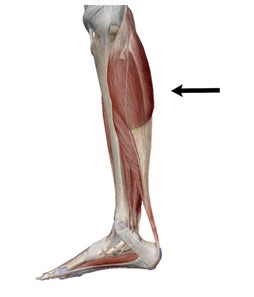 Stiffness in the calf muscles causes a biomechanical change in our gait. This is seen as the heel leaving the ground prematurely, transferring 3-5X our body weight to the plantar fascia up to 10,000 times per day. Unfortunately, most stretching routines for calf muscles only lead to short term improvement and can often make the plantar fascia worse from the mechanical stress placed on it by the stretching. Research has pinpointed that the medial head of the gastrocnemius muscle of the calf to be the most causative of the plantar fasciitis and when stretched or treated appropriately can provide the most effective relief.
Stiffness in the calf muscles causes a biomechanical change in our gait. This is seen as the heel leaving the ground prematurely, transferring 3-5X our body weight to the plantar fascia up to 10,000 times per day. Unfortunately, most stretching routines for calf muscles only lead to short term improvement and can often make the plantar fascia worse from the mechanical stress placed on it by the stretching. Research has pinpointed that the medial head of the gastrocnemius muscle of the calf to be the most causative of the plantar fasciitis and when stretched or treated appropriately can provide the most effective relief.
Can Stretching Lengthen A Muscle?
Countless studies have shown that stretching only produces a neurological effect on the muscle, temporarily improving its flexibility. This is true when the stretches are performed for relatively short periods of time. There is no net increase in the length of the muscle and only a short term improvement in flexibility due to the nervous system inhibiting the muscle. However, a study just published last year showed that when a stretch is held for a longer period of time (45 seconds or more) for multiple reps and sets, a lengthening of the muscle can occur.
This new study can give hope to the plantar fasciitis case, as a change in length of the medial gastrocnemius muscle has been shown to improve plantar fasciitis related pain. Emphasis should be placed on gradually increasing the overall volume and the time spent stretching the calf muscle. This will result in both managing the pain with plantar fasciitis and to improve athletic performance. Budget your daily time wisely, as a proper plantar fasciitis stretching program should last 9-18 minutes. A small price to pay to rid your life of this chronic pain.
Plantar Fasciitis Stretching Routine
- You will need a slant board or binder and a long band or strap.
- Place your feet on the slanted surface and lean your knee slightly over your toes.
- Hold each position for 45 seconds.
- Hold the stretches to the point of mild discomfort
- Every three weeks increase the stretches by 15 seconds each
- Perform these exercise twice daily
- Be consistent, perform this routine at least 5 times per week, for 12 weeks straight.
- Can be done while wearing shoes, but barefoot is more beneficial
- A video of this routine can be found on our YouTube channel-CoreRoanoke or by using this QR code.
Position 1. Feet parallel
Position 2. Toes Turned In
Position 3. Staggered Stance
Position 4. Kneeling Stance
Position 5. Band Pull (make sure to rotate the foot laterally)
Manual Medicine
To assist this stretching routine, I would recommend adding some manual medicine therapy. In our office, we prefer to use a combination of Active Release Technique and Acupuncture/Dry Needling. Active Release Technique is useful to reduce chronic scar tissue and the fibrosis found inside of the gastrocnemius and surrounding muscles. This soft-tissue technique has been time-tested as an indispensable tool for improving this painful condition. Likewise, an older therapy, acupuncture is a powerful pain relieving treatment. Acupuncture works to modify the brain’s sensitivity to the inflamed tissue helping to make normal activities more tolerable.
Our office is dedicated to helping you with even the most stubborn of conditions. Plantar fasciitis does not have to control your life. Together, your life can become healthier than it has ever been before.

Daryl C. Rich, D.C., C.S.C.S.

